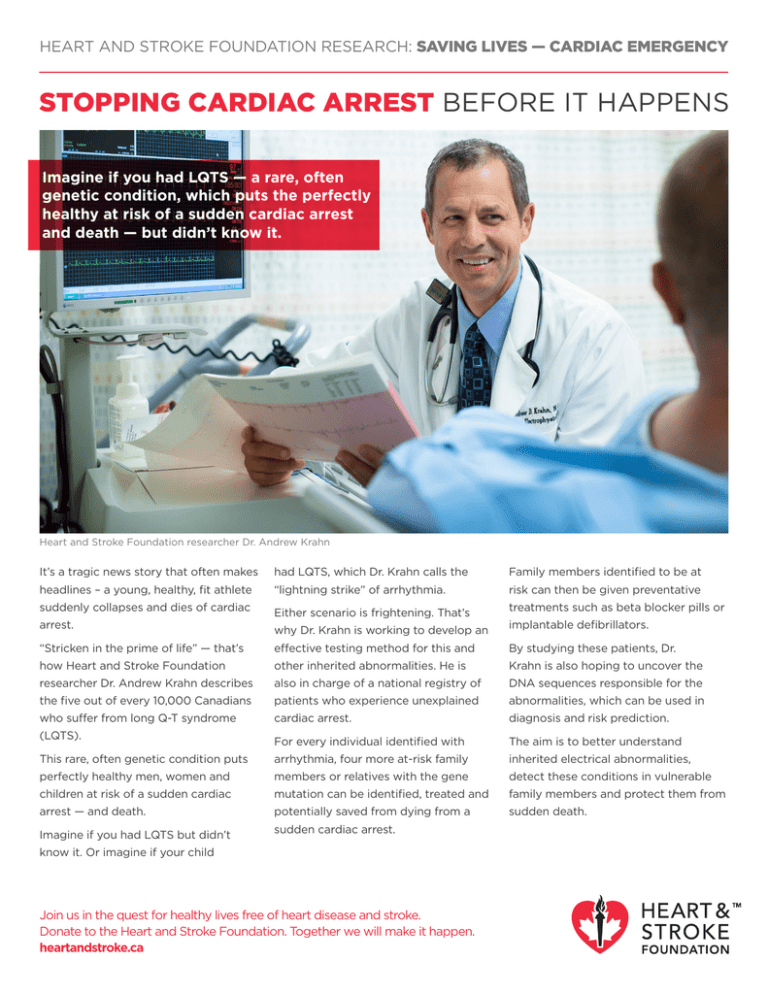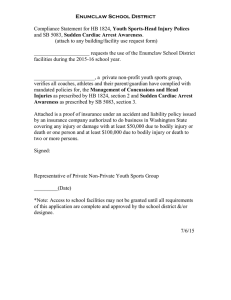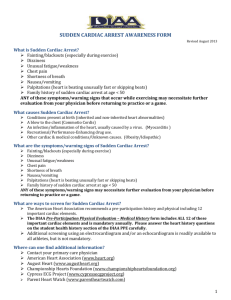stopping cardiac arrest before it happens
advertisement

HEART AND STROKE FOUNDATION RESEARCH: SAVING LIVES — CARDIAC EMERGENCY STOPPING CARDIAC ARREST BEFORE IT HAPPENS Imagine if you had LQTS — a rare, often genetic condition, which puts the perfectly healthy at risk of a sudden cardiac arrest and death — but didn’t know it. Heart and Stroke Foundation researcher Dr. Andrew Krahn It’s a tragic news story that often makes had LQTS, which Dr. Krahn calls the Family members identified to be at headlines – a young, healthy, fit athlete “lightning strike” of arrhythmia. risk can then be given preventative suddenly collapses and dies of cardiac Either scenario is frightening. That’s treatments such as beta blocker pills or arrest. why Dr. Krahn is working to develop an implantable defibrillators. “Stricken in the prime of life” — that’s effective testing method for this and By studying these patients, Dr. how Heart and Stroke Foundation other inherited abnormalities. He is Krahn is also hoping to uncover the researcher Dr. Andrew Krahn describes also in charge of a national registry of DNA sequences responsible for the the five out of every 10,000 Canadians patients who experience unexplained abnormalities, which can be used in who suffer from long Q-T syndrome cardiac arrest. diagnosis and risk prediction. (LQTS). For every individual identified with The aim is to better understand This rare, often genetic condition puts arrhythmia, four more at-risk family inherited electrical abnormalities, perfectly healthy men, women and members or relatives with the gene detect these conditions in vulnerable children at risk of a sudden cardiac mutation can be identified, treated and family members and protect them from arrest — and death. potentially saved from dying from a sudden death. Imagine if you had LQTS but didn’t sudden cardiac arrest. know it. Or imagine if your child Join us in the quest for healthy lives free of heart disease and stroke. Donate to the Heart and Stroke Foundation. Together we will make it happen. heartandstroke.ca HEART AND STROKE FOUNDATION RESEARCH: SAVING LIVES — CARDIAC EMERGENCY FINDING ANNA IN TIME Anna suffered a sudden cardiac arrest while working out. She didn’t know she had an undiagnosed — and treatable — genetic heart condition. Anna Shanh remembers nothing of The situation was critical: she was After a year of testing following the her sudden cardiac arrest. Her last rushed to the hospital, put into an incident, Anna was diagnosed with Long memory is climbing into her car after induced coma, and had an implantable Q-T syndrome. It results in an abnormal work. She woke up three days later in cardioverter defibrillator implanted in heart rhythm (arrhythmia) which puts a hospital bed with her fiancé, family her chest. people at risk for potentially fatal and friends by her side. No one was more surprised than conditions like sudden cardiac arrest. Anna’s loved ones assembled the Anna, a trained nurse. At 25, she was With no apparent symptoms for the pieces of the puzzle for her. While young, fit and healthy. She ate well, condition, Anna never knew she was working out at her local YMCA, she exercised daily and avoided drugs and at risk. suddenly collapsed and hit her head cigarettes — nothing put her at risk on the floor. for sudden cardiac arrest. Today Anna is happy and healthy, Staff sprang into action, performing “The first thing everyone says to me the Heart and Stroke Foundation to CPR and administering shocks from an is, ‘You’re so young,’” Anna says. “This advocate for heart health and public automated external defibrillator (AED). can happen to anyone.” access to AEDs. Thanks to your support, research is creating survivors by enabling faster, better cardiac emergency response and treatment. Help create more survivors. #CreateSurvivors newly married, and joining forces with





